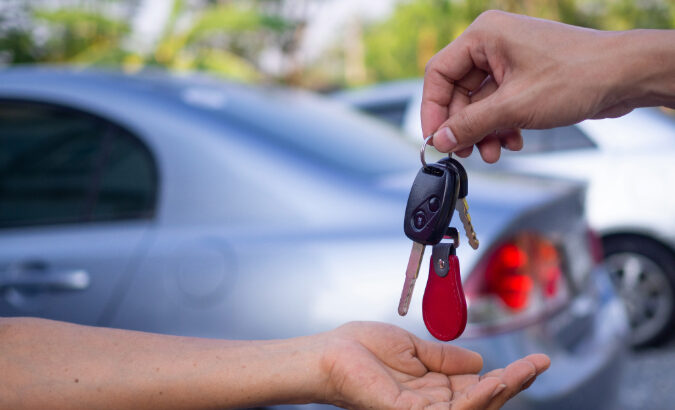
The dashboard of a car is full of mysterious lights that run the gamut from warning to a friendly reminder. Most of these lights remain dark most of the time, and when they do emerge, few people understand all of them. The check engine light is cardinal among these cryptic signals, with many possible reasons for its appearance and more than a few ways to make it go away. But what does the check engine light mean? Despite its varied reasons for appearing, there is an overarching rationale to it, and an important one at that. Understanding what to do when the check engine light comes on can mean the difference between a dangerous mechanical issue and an easy fix at the auto shop.
What does the check engine light mean?
Let’s start with what the check engine light doesn’t mean. It’s easy to see a warning light come on and hit the panic button, but the check engine light doesn’t usually warrant immediate concern. If you’re driving along and it turns on, you don’t usually need to pull over and call for help. You should take the light as a sign it’s time to get to a mechanic soon, though. The check engine light is a part of your car’s onboard diagnostics system, which monitors variables like engine speed, fuel mixture, and ignition timing. When that system detects a problem it can’t correct on its own, it responds by switching on the check engine light.1
What does the check engine light look like?
So, your car’s diagnostics have detected a problem, what are you looking for? A yellow check engine light will appear on your dashboard, though the shape may vary based on the car you’re driving. In some cars, the check engine light literally reads “check engine” and nothing else, while in others it appears in the shape of an engine, occasionally with the word “check”. The light’s appearance may also vary depending on the problem. A solid check engine light indicates a less urgent issue, while a flashing check engine light signals a problem that requires immediate attention. Some cars also show a red check engine light if the problem is severe.1
Common reasons the check engine light comes on
Engine problems
There is a slew of engine problems that can cause your check engine light to come on. Most are minor and cause your car’s fuel economy and emissions rating to decline, however, some can develop into major issues if unchecked. Engine misfires, for example, will cause poor fuel economy and performance in the short run, but can eventually lead to outright engine failure.
Damaged or loose parts and equipment
Any parts that are damaged, loose or missing will trigger the check engine light. Loose gas caps are a common example of this, though this problem does not pose any serious harm to your car.
Sensor issues
If your diagnostics system detects faults in any of your engine’s many sensors, your check engine light will come on. Some common examples are your oxygen sensors, which measure unburned oxygen in your exhaust system, and mass air flow sensors, which measure the amount of air entering your engine to determine the amount of fuel it needs.2
Transmission problems
As the master of your engine’s power output, your transmission can also trigger the check engine light if it malfunctions. Transmission problems can lead to increased tailpipe emissions.3
Overheating
If your coolant has not been changed properly it can eventually cause your engine’s thermostat to degrade, eventually overheating the engine. If this happens, your check engine light will activate.4
How long can you drive with the check engine light on?
Many of us willfully ignore the check engine light until we see the symptoms of whatever caused it to turn on. That’s a tempting strategy, but it’s not wise. Your issue may be minor at first but develop into a major problem, as is the case with a bad catalytic converter. Even if the problem is merely reducing your fuel economy, that’s still additional emissions and expenses out of your pocket that a quick trip to the mechanic could fix. In either case, you should have your car evaluated as soon as possible.2
What should you do when the check engine light comes on?
Turn your car on and off
Turning your car on and off three times consecutively may reset your car’s trouble codes. It’s worth trying this before taking your car in for service.2
Check gas cap
Yes, sometimes it’s as simple as tightening your gas cap. Be patient after doing this, as it may require several trips before the light resets.
Perform a diagnostic test
Many newer cars come with onboard remote diagnostics systems. These systems can report trouble codes and schedule a service appointment accordingly.
Reduce your speed
If your check engine light blinks on while you’re driving, a good first response is to reduce the strain on your engine. Lowering your speed will help. This is especially important if the check engine light is blinking or if it is red, indicating a more urgent issue.
Reduce load
You can also reduce the strain on your engine by reducing the haul it’s carrying. If you’re towing anything, you might want to stop.1
Wait and see
It’s not advisable, but you can always wait and see what happens. Most check engine lights do not need to be addressed immediately, and worsening problems will make themselves apparent. If your car’s situation is becoming more urgent, you’ll probably see or hear the signs.
Visit a mechanic
If you haven’t discovered the reason your check engine light is on, it’s probably a good question for your mechanic. You should take your car in for service as soon as possible.
Regular maintenance will help ensure that your check engine light rears its head as seldom as possible. However, when and if it does, every driver should know how to respond. Every driver should also protect their car in the event something more serious occurs. Get a free quote from Nationwide today and learn how car insurance can better protect you and your vehicle.
1https://www.consumerreports.org/car-repair-maintenance/what-does-check-engine-light-mean-a2041364753/, Accessed November 2021.
2https://www.autozone.com/diy/maintenance/top-five-reasons-check-engine-light, Accessed November 2021.
3https://www.repairsmith.com/i/blog/6-reasons-why-your-check-engine-light-might-be-on/, Accessed November 2021.
4https://cars.usnews.com/cars-trucks/best-cars-blog/2016/11/why-your-check-engine-light-comes-on, Accessed November 2021.
Disclaimer:
The information included is designed for informational purposes only. It is not legal, tax, financial or any other sort of advice, nor is it a substitute for such advice. The information may not apply to your specific situation. We have tried to make sure the information is accurate, but it could be outdated or even inaccurate in parts. It is the reader’s responsibility to comply with any applicable local, state, or federal regulations. Nationwide Mutual Insurance Company, its affiliates and their employees make no warranties about the information nor guarantee of results, and they assume no liability in connection with the information provided. Nationwide, Nationwide is on your side, and the Nationwide N and Eagle are services marks of Nationwide Mutual Insurance Company. © 2021 Nationwide.



